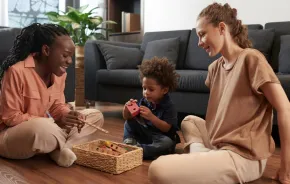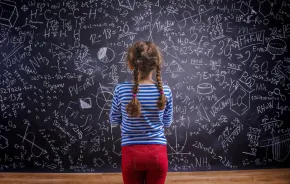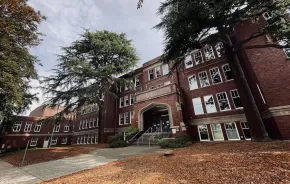
Last spring, teachers made heroic efforts to pivot to remote learning with almost no advance preparation. But the results were hit or miss. After a summer to plan, districts are promising more consistent, quality online education. However, many families are afraid that it won’t be (or have already figured out that it isn’t) enough. Most of the virtual cultural experiences and outings we found last spring are still available. But now, with an eye to providing hands-on activities and filling academic gaps, we’ve rounded up some remote learning resources to help your kids thrive in what is likely to be a very weird school year ahead.
Library learning resources and exploration guides
The Seattle Public Library, in partnership with Seattle Public Schools, has developed dozens of Exploration Guides, which are curated collections of digital media on topics that are interesting to youths in three grade ranges (grades 3–5, middle and high school). Consisting of videos, podcasts, art, e-books, historical images and more, the guides encourage self-exploration of each topic. Most of the topics lend themselves to offline activities. For example, neighborhood history guides give high school students a chance to physically explore the city in search of landmarks; middle schoolers can learn to identify urban wildlife; and elementary school students can learn about and then practice culinary skills, or make a terrarium after learning about ecosystems.
A teen service learning project is introducing younger kids to the natural world through simple Bug Safari videos on the Seattle Public Library Kids YouTube channel, which also offers story times and STEAM projects. The King County Library System’s YouTube channel and Pierce County Library’s YouTube channel also have learning resources, such as Spanish lessons and DIY projects that are as varied as origami, drawing, rocket building and tarot card reading.
The Pierce County Library System has also made nondigital, age-specific activity packs for patrons ranging from preschoolers through adults, available for curbside pickup.
Hands-on projects
Find free downloadable lessons for kids of all grade levels on the Washington Green Schools website. These lessons reinforce math and writing skills while teaching students science lessons about pollinators, decomposition, wildlife, climate change and other environmental topics. Most of them also include hands-on outdoor activities.
KiwiCo is a monthly subscription box for hands-on STEM activities. Subscription “crates” designed for specific age groups (from infants to adults) and with emphases on design, engineering, culture or crafts, average $20 per month. Projects include building small catapults, kites, lamps or electric pencil sharpeners. You can switch your crate type at any time.
Little Passports subscription boxes, for preschoolers through elementary school students, provide either hands-on science projects or geography lessons with activities and souvenirs. They are a little more playful and less academic than some other learning boxes. Prices vary by subscription type and length, but average around $20 per month.
Brain Chase gamifies learning with virtual treasure hunts and escape rooms that have themes centered on multiple subjects yet share an overarching quest story. You can choose a mix of academics through Brain Chase’s online partnerships with Rosetta Stone, TypingClub and CodeCombat, or get the kids off their screens by choosing gardening, fitness or yoga. A four-week challenge costs $79; a 16-week series costs $199.
Curiosity at Home is Pacific Science Center’s collection of live and self-directed virtual field trips and programs featuring videos, tutorials and hands-on science experiments for preschoolers through middle schoolers.
Languages
Foreign language instruction was already missing from a lot of area schools before the pandemic, but with remote learning, it can be even harder to find. Duolingo is free and offers instruction in three dozen languages. It’s a pretty intuitive platform, but if you’re looking for language lessons aimed directly at kids, check out the animated videos on the BBC’s subscription-based Muzzy (seven languages; $44 for three months).
One Third Stories works like a subscription box ($28 per month) for kids ages 4–9, providing a monthly audiobook and picture book that progress from English to the target language (French, Spanish, German or Italian), along with activities and games to practice the new vocabulary.
Arts
Outschool is almost like a Craigslist for learning. Teachers offer thousands of live online classes (starting at $10) to small groups of kids ages 3–18. Classes range from a 45-minute workshop on drawing sea turtles to full semester courses in core academic subjects. In between, kids can learn the basics of architecture and robotics, or take guitar, singing or acting lessons.
DIY.org offers all kinds of creative classes (art, coding, photography, Lego) and skills (archery, bookbinding, cryptography) with challenges that kids complete on their own to earn badges. Subscriptions cost $15–$25 a month.
The Domestika creative community has the largest online arts lesson catalog you’re likely to find, with courses ranging from calligraphy to architecture to Photoshop to watercolor techniques and even arts-related business courses, such as logo design and brand strategy. Most courses take from three to eight hours to complete and cost $45 each.
Our local Bureau of Fearless Ideas may be physically closed, but it is busy putting together a fall schedule of virtual writing workshops. Join the mailing list to be notified as workshops are added, or find free activities, writing prompts, projects and resources on the Fearless Times blog.
Seattle Art Museum’s weekly Family Fun Workshops for kids ages 3–10 are now available online.
Health education
Did your fifth-grader miss out on the FLASH (Family Life and Sexual Health) class last year? Parents who want to give these lessons at home can access King County’s FLASH lesson plan online. Seattle Children’s Hospital has converted its puberty workshops for kids ages 10–12 into a new virtual series called The Chat.
If quarantine has got your kiddo down, take a look at the virtual workshop for parents on Seattle Children’s Youth Mental Health First Aid. Find more resources on the child development and parenting web page.
Get movin’
If your kids need more movement, and you haven’t already broken down and bought a Wii, fire up Just Dance Now with its mobile phone app or follow along on the Just Dance YouTube channel.
Of course, YouTube is loaded with fitness videos, and lots of them are aimed at kids. Check out Simply Soccer’s indoor drills, Cosmic Kids Yoga or Moovlee’s monkey-led workouts for pre-K movers and shakers.
If you’re looking for something more like a traditional physical education class, Dynamic PE ASAP offers free lesson plans for different grade levels, and they include outdoor activities.
Carone Learning’s accredited cFitness Academy offers dozens of online health and PE courses for kindergarten through high school. Traditional online courses cost $279; independent study is $149.
Free resources from Sanford Fit include videos, games, activities, lessons and printable materials that help families make healthy choices about food, mood, movement, mindfulness and more.











